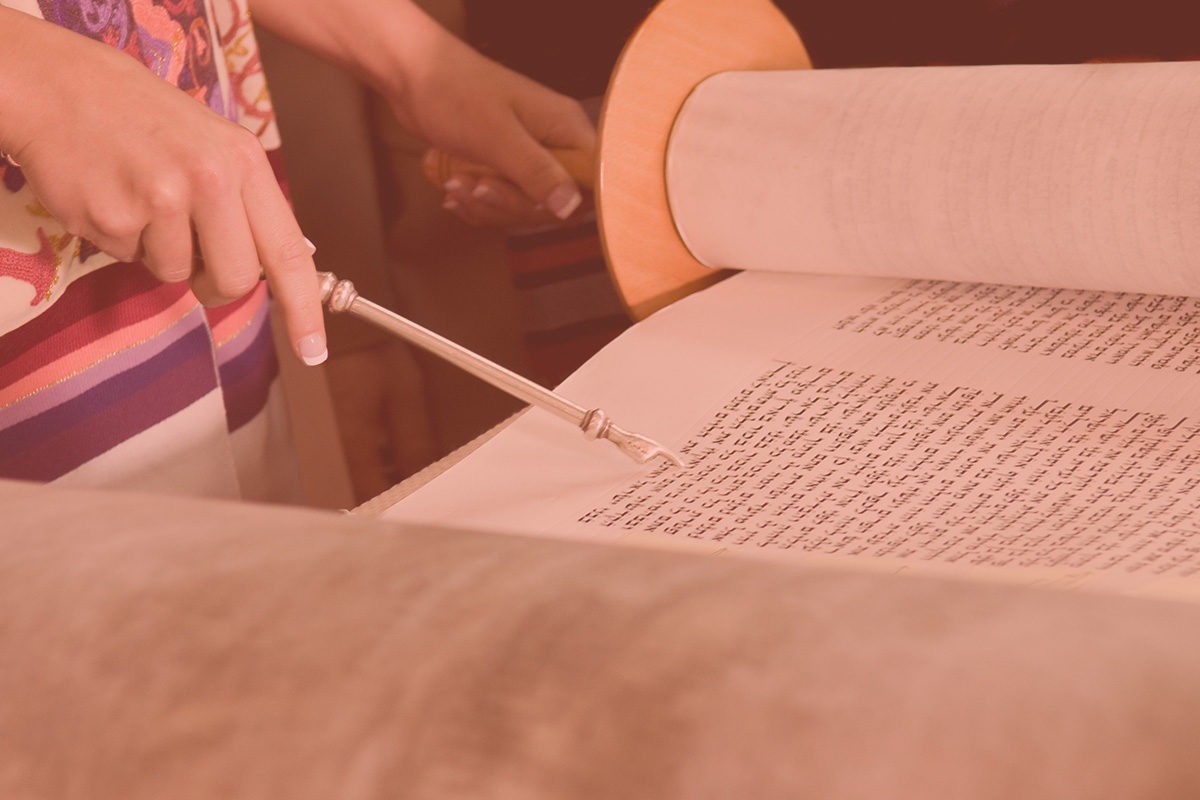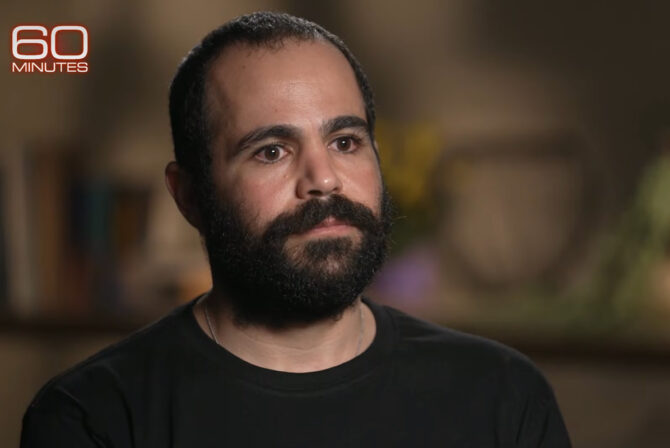On a recent summer evening the house was quiet, except for our neighbor’s construction workers sweeping gravel off the driveway. I had just dropped off my younger son at tennis lessons and my older son at cross-country practice. My husband was still at work. Dinner — leftover pesto pasta with chicken — sat ready in the fridge.
In this rare family-free hour at home, I wondered what to do. Take a bath, go for a run, read one of the young adult novels stacked on my desk, bake the peach crisp I had been craving?
As I considered the options, I decided that, first, I’d take a minute to listen to a recording our cantor had texted me earlier in the day. The next Friday I would be chanting the Torah at our synagogue, and I wanted to begin imprinting the melody into my brain.
I sat in an easy chair by the window, iPhone on one side, Gunther Plaut’s Torah: A Modern Commentary on the other. When I finished, I looked up, and was taken by surprise — an hour had passed. Stumbling through a first-draft reading, I had been in flow, untethered from time, which usually happens only when I’m reading, writing, running, or teaching. In the dregs of a hot summer Tuesday, I hadn’t known such a space could exist. And, until several years ago, I couldn’t have predicted my joy in inhabiting it.
For my bat mitzvah in the late ’80s at my Reform temple, I hadn’t even learned the tropes. Instead, I memorized my portion from the rabbi’s cassette recording. Although I liked the precision of following the Hebrew with a silver pointer, I didn’t feel I understood how the text worked.
Yet at a temple retreat several years ago, I joined a small session on cantillation because I enjoyed Jewish songs. In half an hour, I realized that Torah chanting checked all my favorite intellectual boxes: history, storytelling, music, plus a challenge. Puzzling together the Hebrew words, English translations, and trope marks felt like reading poetry in 3D.
A couple of months later, I chanted my first lines in front of the congregation at a sparsely attended summer service. Standing at the podium, a yad in hand for the first time in decades, the minutes flashed by. Since then, I’ve chanted occasionally, at regular services and also on Rosh Hashanah and Yom Kippur — a time that feels even more heightened because the tropes change for the high holidays, not to mention the increased size of the crowd.
Each time I am visibly nervous, as I’m not a singer. I skew flat every so often, and I have no idea how to phrase passages with my breath. Yet I also sense that I’m not the main event — nobody is judging me on my tone or my pitch, nobody cares what I’m wearing, except for a prayer shawl around my shoulders to honor the Torah. Rather, I’m simply a conduit for these millennia-old words.
In addition, as an English and history teacher, someone devoted to words, I notice that the text means more when connected to the musical notation. Many basic tropes, recognizable from the Ve’ahavta prayer, recur as a musical baseline. But when more unusual melodies appear, watch out — that means something important is going on.
When our cantor recently assigned a passage to me for another sleepy summer Shabbat, I was thrilled to see it was one of the biggest biblical stories there is: the section of Numbers 20 when Moses strikes a rock to get water and then learns that his arrogance, or perhaps lack of faith, or reluctance to sanctify God, has cost him entry into the Promised Land.
In this fateful sentence — “But the Eternal One said to Moses and Aaron, ‘Because you did not trust Me enough to affirm My sanctity in the sight of the Israelite people, therefore you shall not lead this congregation into the land that I have given them,’” — the words leading up to God’s statement use complicated tropes and have an elegiac, drawn-out quality, as if to let us know that what comes next is sadly inevitable. Yet the tropes in the quotation itself are normal, as if to emphasize the loss of promise that Moses has suffered in this moment.
These days, when I attend a Torah service — something I don’t do regularly — I find myself following along not with a silver pointer but with my fingertip, trying to remember the few Hebrew roots I know, delighted when I can connect a trope to a translation. I now appreciate about why this arcane system exists — to heighten the emotion behind these world-changing words — even as I wish the scroll included vowels and trope markings.
During the weeks leading up to chanting, I often save practice for the end of the evening, just 15 or 20 minutes before bed. The process is unexpectedly meditative, just as wearing a tallit on the bima feels unexpectedly comforting. I even bought a new prayer shawl — off-white silk shot through with a silver, gold and bronze tree of life — replace the musty rainbow one I wore at my bat mitzvah.
If you had told me five or 10 years ago that I would be chanting Torah several times a year, I would have laughed. It would have seemed too heavy, too old-fashioned, somehow just too much.
And yet, when the cantor calls, it’s exactly the ancient and complicated beauty of the text that keeps me saying yes. Through words and music, I’ve found my own path as an adult into a tradition I thought I’d left behind at 13, creating a peace I didn’t know could come from Judaism.
Image view Frank Rosenstein/Photodisc








